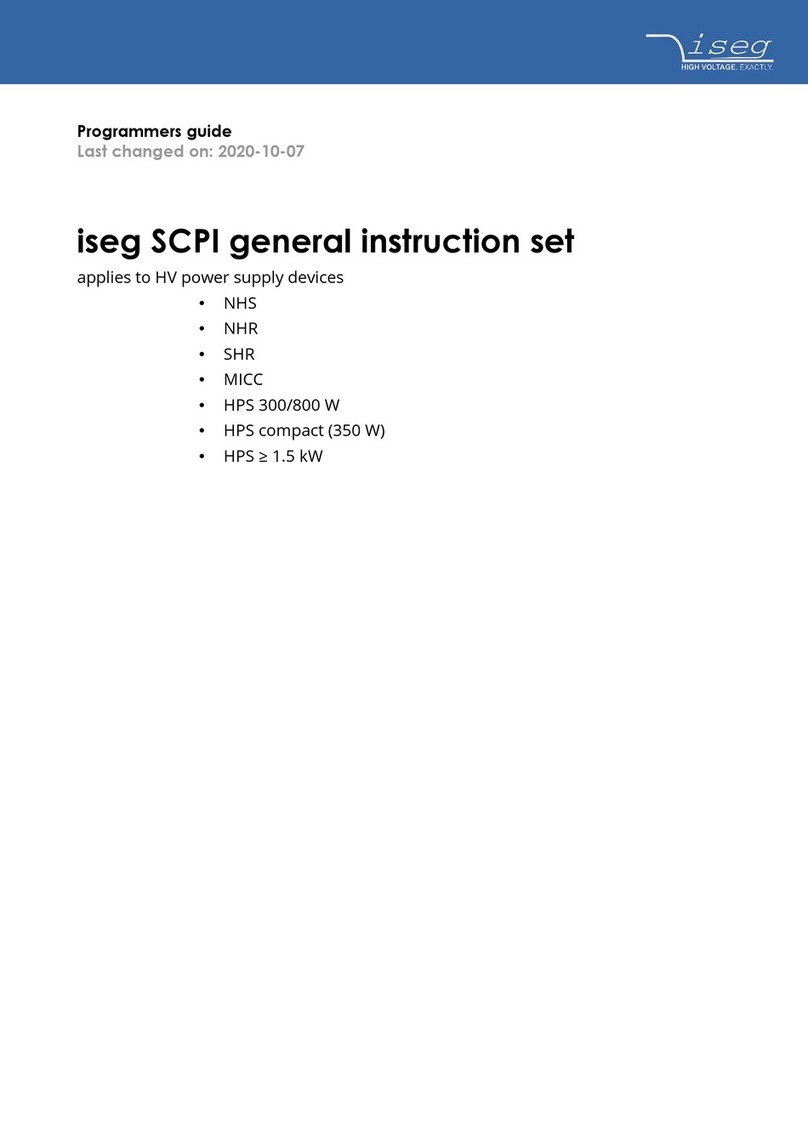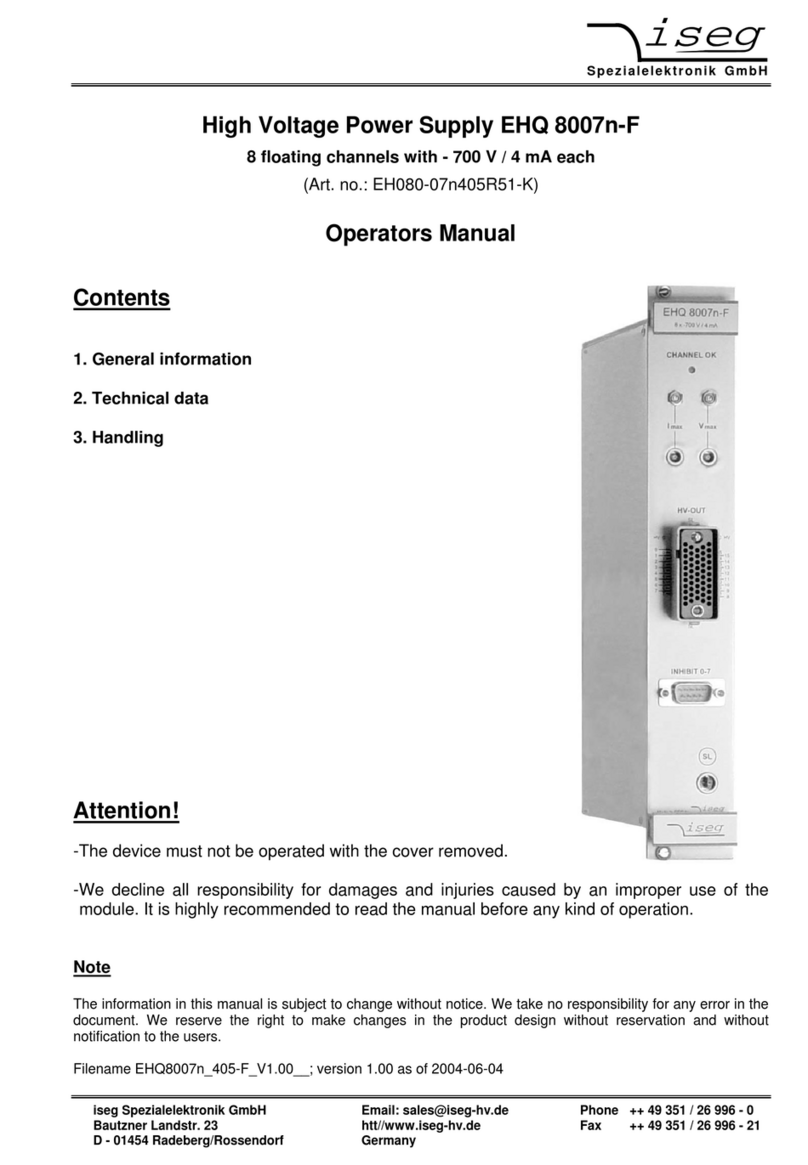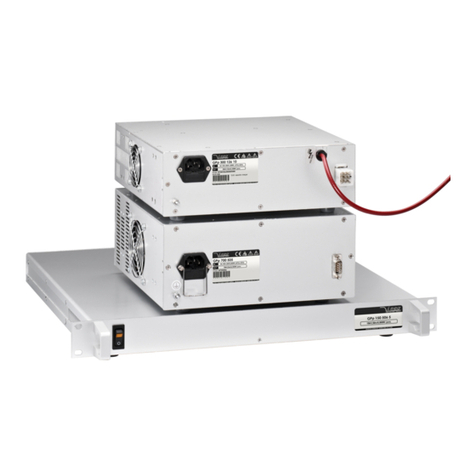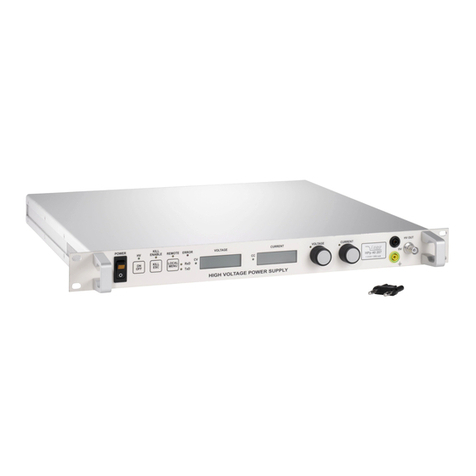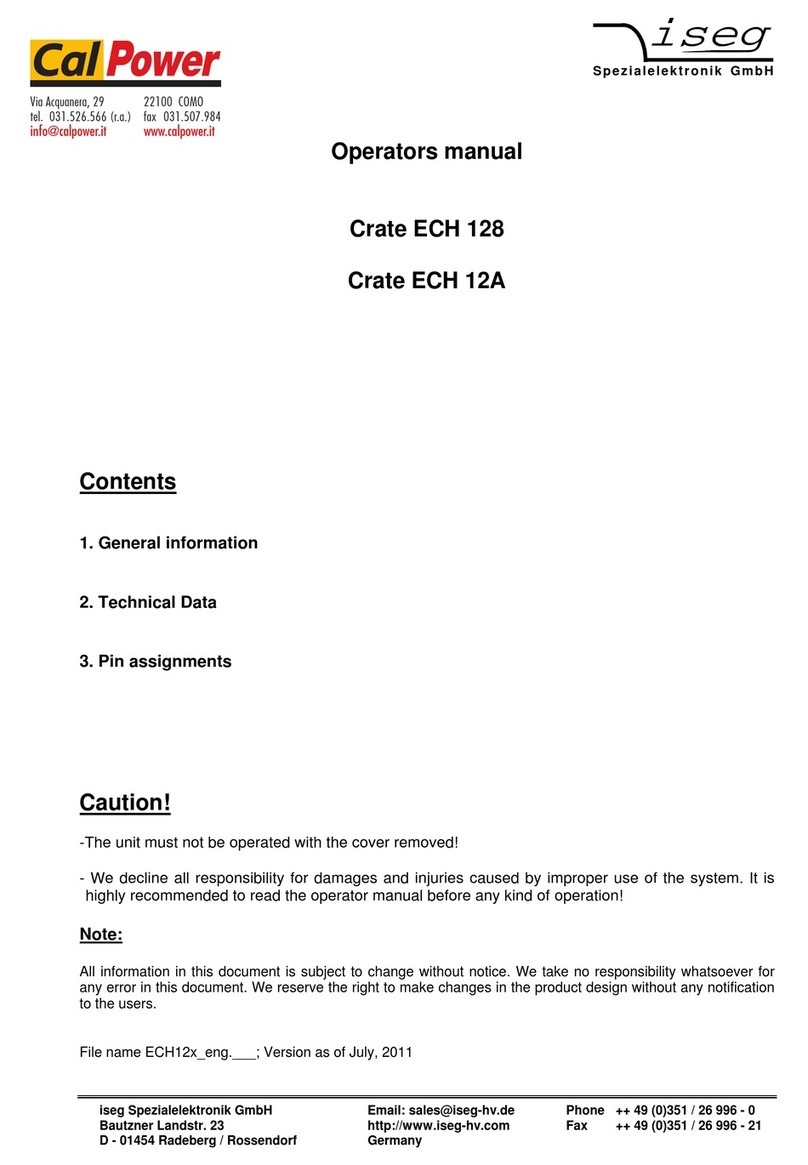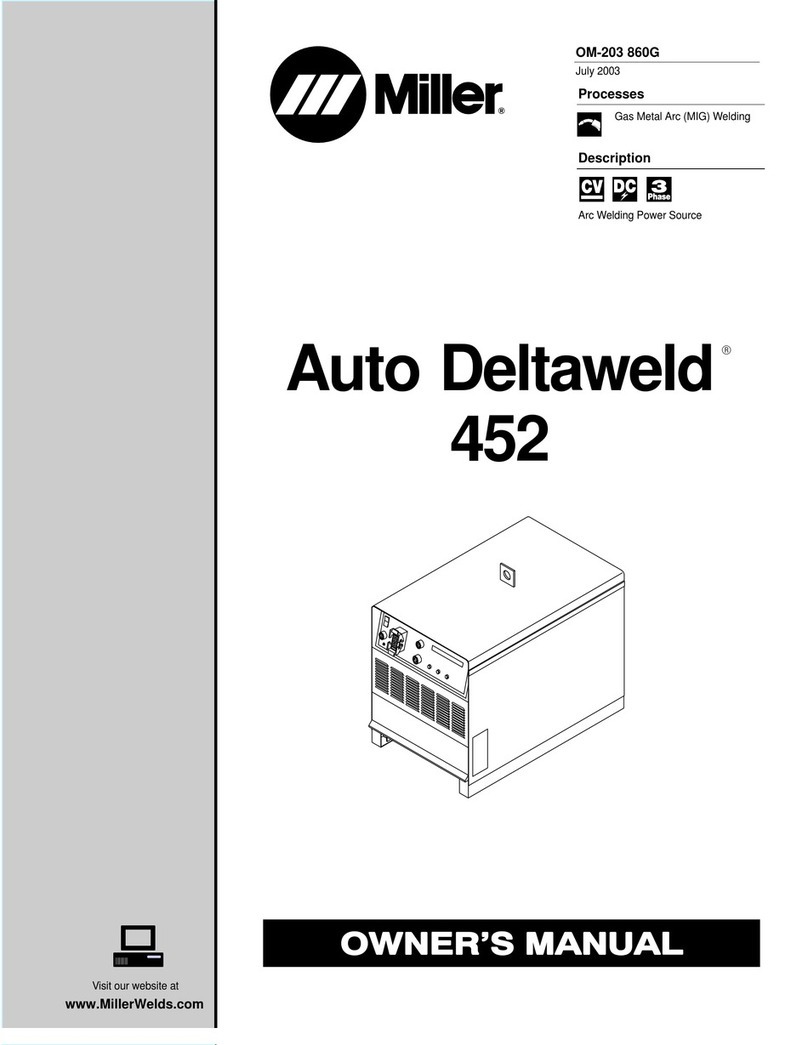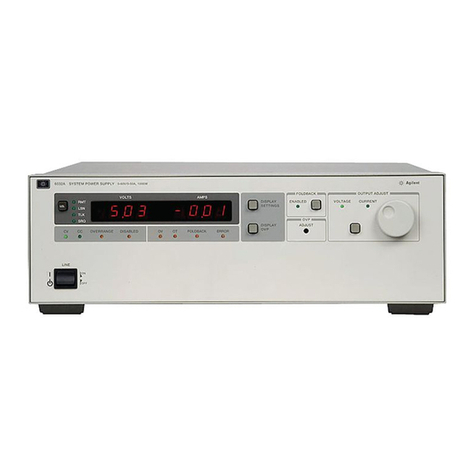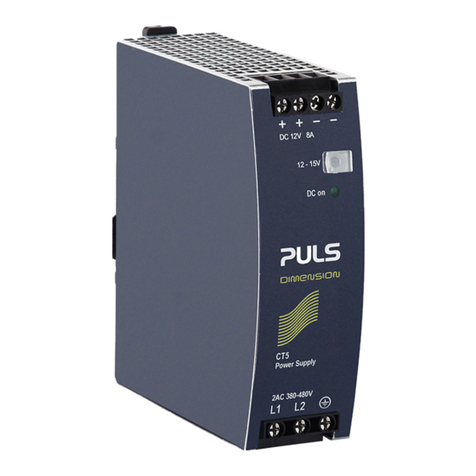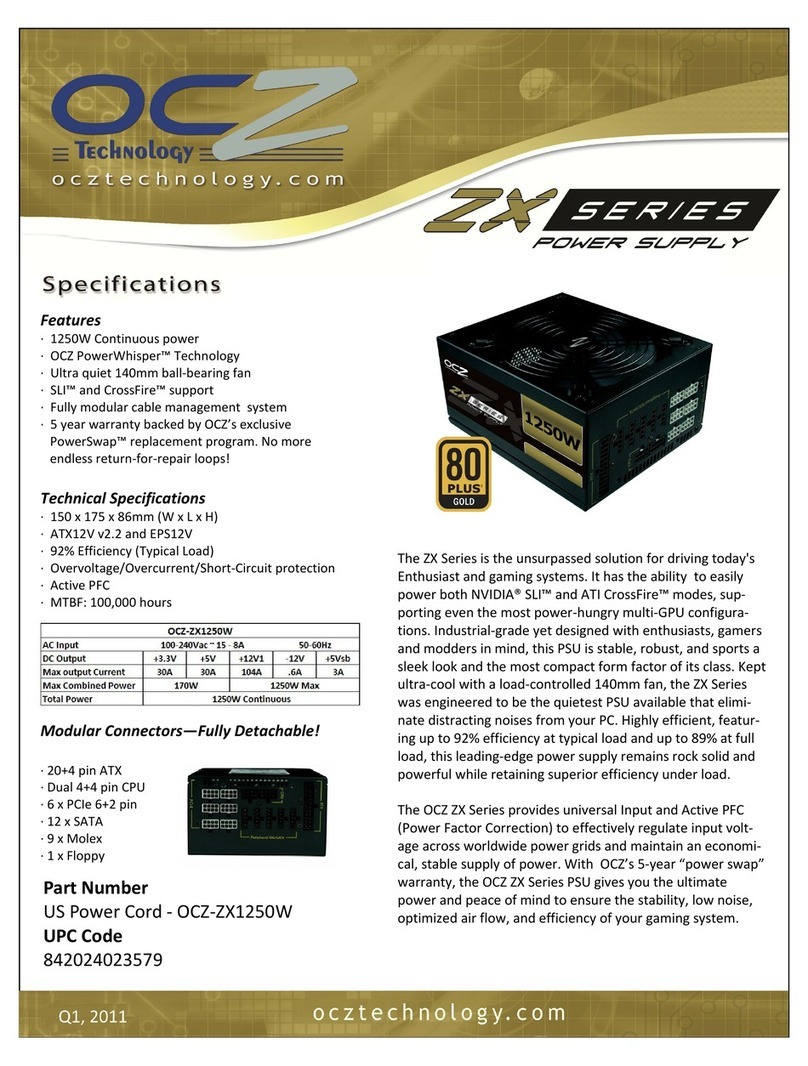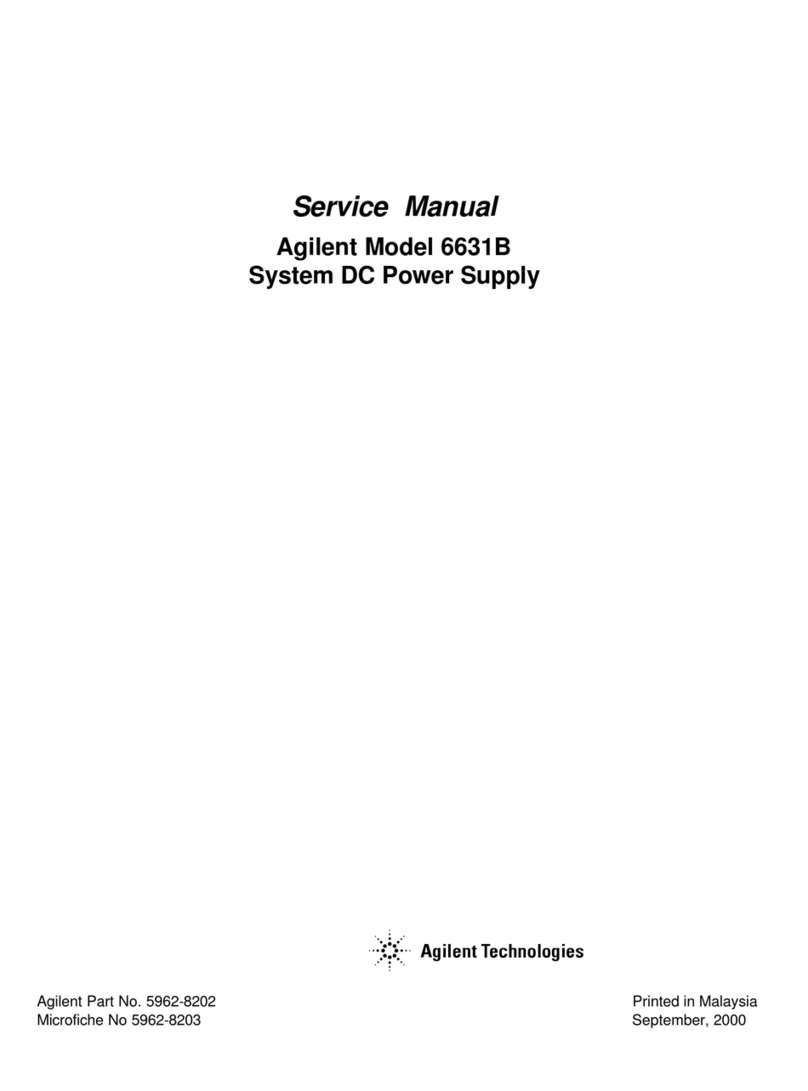iseg HPS 300 W User manual

Bautzner Landstr. 23 http://www.iseg-hv.de Fax ++ 49 (0)351 / 26 996 - 21
D - 01454 Radeberg/ Rossendorf
Manual
High Voltage Power Supply
of the Device Classes
HPS 300 W, HPS 800 W

S pe z ia l el e kt r o ni k G mb H
Bautzner Landstr. 23 http://www.iseg-hv.de Fax ++ 49 (0)351 / 26 996 - 21
2 D - 01454 Radeberg/ Rossendorf
Attention
It is strongly recommended to read the manual before operation!
To avoid the possibility of lethal shock to the operator, the unit must not be operated with the cover removed.
There are no user maintainable parts inside the power supply!
The mains connector is equipped with basic insulation and a protective earth conductor. The unit may only be operated with
protective earth conductor connected.
We decline all responsibility for damages and injuries caused by an improper use of the device. It is strongly recommended to
read the manual before operation!
All information in this document is subject to change without notice. We take no responsibility for any error in this document.
We reserve the right to make changes in the product design without any notification to the users.
Warning! notes in the text call attention to hazards in operation of these units that could lead to possible injury
or death.
Caution! notes in the text indicate procedures to be followed to avoid possible damage to equipment.
Note! notes in the text point to special features.

S pe z ia l el e kt r o ni k G mb H
Bautzner Landstr. 23 http://www.iseg-hv.de Fax ++ 49 (0) 351 / 26 996 - 21
D - 01454 Radeberg/ Rossendorf 3
Table of Contents
1
Safety instructions ............................................................................................................................................................5
2
Device description ............................................................................................................................................................6
2.1
Technical data device class HPS, 300 W ......................................................................................................................7
2.2
Technical data device class HPS, 800 W ......................................................................................................................9
2.3
Electrical wiring of the high voltage output...................................................................................................................10
2.4
Dimensions ..................................................................................................................................................................11
3
Functional description.....................................................................................................................................................12
3.1
Operation states...........................................................................................................................................................12
3.2
Monitoring ....................................................................................................................................................................13
3.3
Interlock .......................................................................................................................................................................14
3.4
ARC Management .......................................................................................................................................................14
3.5
KillEnable.....................................................................................................................................................................15
4
Pinout .............................................................................................................................................................................15
4.1
Supply..........................................................................................................................................................................15
4.2
HV connection..............................................................................................................................................................15
4.3
OV connection .............................................................................................................................................................15
4.4
IL connection................................................................................................................................................................15
4.5
Interface connection.....................................................................................................................................................15
5
Operation........................................................................................................................................................................16
5.1
Operating mode ...........................................................................................................................................................16
5.2
Front panel operation...................................................................................................................................................16
5.3
Interface control ...........................................................................................................................................................19
5.4
Description of the Analogue I/O interface (AIO)...........................................................................................................25
6
Troubleshooting..............................................................................................................................................................27
6.1
Error messages on Displays ........................................................................................................................................27
6.2
Further Errors...............................................................................................................................................................27
7
Maintenance...................................................................................................................................................................27
List of Figures
Figure 2.1: Electrical wiring of the high voltage output ............................................................................................................10
Figure 2.2: Dimensioned drawing, in mm................................................................................................................................11
Figure 3.1: Operating area of the device.................................................................................................................................12
Figure 3.2: Power reduction vs. input voltage .........................................................................................................................14
Figure 5.1: Back panel of the device .......................................................................................................................................15
Figure 6.1: Front panel (HV connector at the front).................................................................................................................16
Figure 6.2: Set values the display in HV OFF state.................................................................................................................16
Figure 6.3: Set values the display in HV ON state ..................................................................................................................16
Figure 5.4: Electrical wiring of the analogue and digital in- and outputs..................................................................................26

S pe z ia l el e kt r o ni k G mb H
Bautzner Landstr. 23 http://www.iseg-hv.de Fax ++ 49 (0)351 / 26 996 - 21
4 D - 01454 Radeberg/ Rossendorf
List of Tables
Table 2.1: Technical data HPS 300W .......................................................................................................................................7
Table 2.2: Additional technical data HPS 300W........................................................................................................................8
Table 2.3: Technical data HPS 800W .......................................................................................................................................9
Table 2.4: Additional technical data HPS 800W......................................................................................................................10
Table 3.1: Operating states.....................................................................................................................................................13
Table 3.2: Parameters of the ARC Management ....................................................................................................................14
Table 5.1: Electrical wiring of the RS232 Interface..................................................................................................................20
Table 5.2: Programming serial interface .................................................................................................................................20
Table 5.3: Pinout CAN connector............................................................................................................................................20
Table 5.4: Pin assignment male D Sub 9 connector ...............................................................................................................25
Table 6.1: Further Errors.........................................................................................................................................................27

S pe z ia l el e kt r o ni k G mb H
Bautzner Landstr. 23 http://www.iseg-hv.de Fax ++ 49 (0) 351 / 26 996 - 21
D - 01454 Radeberg/ Rossendorf 5
1 Safety instructions
Following instructions are made for the personal safety of the operator, the safe use of this product and the connected devices.
Warning! Before operations at the load or the high voltage output of the power supply are started, the device
has to be switched off, the discharge of residual voltage has to be finished and the high voltage
output of the power supply must be properly grounded.
Depending on application residiual voltages
can be present for long time periods. These residiual voltages can lead to severe injuries.
This High Voltage Power Supply has to be installed by trained and qualified personnel only.
Warning! High voltage power supplies of the device class HPS 300 W, 800 W are supplied from single phase
mains voltage and generate an output voltage up to 30 kV. The disregard of this voltage condition
can cause death, heavy injuries or material damage.
Before connecting to the local mains it must be made sure that the nominal line voltage of this unit matches to the local mains.
The power input has to be fused (see technical data).
After system assembly the connections with the protective ground have to be checked for proper connection!
Warning! For devices equipped with a LEMO-HV connector, the high voltage must not be switched on until the
corresponding counterpart has been contacted.
The HV cable has to be connected to the load properly and isolated according to proof-voltage.
The shield of the HV cable is always connected to the housing. It can be used as return.
The factory installed short-circuit bridge must be mounted between the connections "0V" and "X". If this short-circuit bridge is
not installed, an additional conductor with a cross-section of at least 1.5 mm² must be used as the return conductor. This
conductor must be connected to the "0V" connection. The "0V" terminal can accept a voltage related to the earth potential.
Warning! The user has to ensure that no danger will occur because of the voltage between the return
conductor and the protective ground!
A specified air flow rate (see technical details) has to be guaranteed under any circumstances. Therefore do not cover any
air input or output slots.
If the device is used as a desk top instrument, the enclosed distance pieces have to be installed at the bottom side of the
device.

S pe z ia l el e kt r o ni k G mb H
Bautzner Landstr. 23 http://www.iseg-hv.de Fax ++ 49 (0)351 / 26 996 - 21
6 D - 01454 Radeberg/ Rossendorf
2 Device description
High voltage power supplies of the device class HPS 300 W and 800 W are supplied from single phase mains voltage and
generates an output voltage up to 30 kV as well as an output current up to 800 mA.
The device can be controlled via:
•front panel operation with rotary encoder and display,
•digital interfaces or
•analogue interface.
Main characteristics:
•best control characteristics
•ARC management
•very low ripple and noise, very low EMI
•multiple interface options
•front panel control with LCD
•optional capacitor charger (CLD)

S pe z ia l el e kt r o ni k G mb H
Bautzner Landstr. 23 http://www.iseg-hv.de Fax ++ 49 (0) 351 / 26 996 - 21
D - 01454 Radeberg/ Rossendorf 7
2.1 Technical data device class HPS, 300 W
Table 2.1: Technical data HPS 300W
Device class
H
PS, 300
W
Output power P
nom
[W] 300
Polarity Factory fixed, n negative or p positive
Efficiency > 80% (V
in
= 230 V)
Option capacitor charger (CLD) Very low output voltage overshoot
Ripple and noise Standard ∆v
out
< 0.01%
∗
V
nom
(> 10 Hz), V
out
≤
8 kV ∆v
out
< 0.05%
∗
V
nom
(> 10 Hz) V
out >
8 kV
Option CLD ∆v
out
< 1.5%
∗
V
nom
(> 10 Hz)
Stability ∆v
out
< 0.05%
∗
V
nom
(for 8 h with constant conditions, after ½ h warmup)
Voltage regulation ∆v
out
< 0.01%
∗
V
nom
(∆v
in
, 0 ≤I
out
≤I
nom
, 5 V ≤V
out
≤V
nom
)
Current regulation ∆I
out
< 0.2%
∗
I
nom
(∆v
in
, 5 V ≤V
out
≤V
nom
)
Accuracy Voltage: < 0.5% • V
OUT
+ 0.3% ·V
NOM
for one year
Current: < 0.1% • I
OUT
+ 0.05% ·I
NOM
for one year
Temperature coefficient < 2
∗
10
-4
/K
Front panel control Front panel operation via rotary encoders and displays (LCD)
Remote control Option AIO Analogue signals Level 0 V – 5 V
Digital signals Low level 0 V – 1 V
High level 3.5 V – 5 V or open
Digital interface USB, CAN, Option: RS232 (RS2), Ethernet (ETH), IEEE 488 (IEE)
Supply V
in
= 85 V – 264 V AC (PFC)
I
in
= 1.7 A (V
in
= 230 V, P
nom
); I
in
= 3.5 A (V
in
= 115 V, P
nom
)
Line frequency 47 Hz < f
l
< 63 Hz
Internally fused with 2 x 6.3 A with slow characteristic
Inrush current approx. 25 A
External fuse 6.3 A, with slow characteristic
Cooling Forced cooling with integrated fans (≤10 m³/h)
Monitoring Single phase mains voltage, auxiliary voltage, over voltage, temperature
Working conditions Temperature: 0°C to 35 °C
Humidity: 20% to 90%, no condensation
Storage conditions Temperature: -25°C to 80 °C
Humidity: 20% to 90%, no condensation
Electromagnetic
compatibility
Emission EN 55011 (curve B)
Immunity EN 61000 4-2, EN 61000 4-3, EN 61000 4-4, EN 61000 4-8
Safety standard EN 61010-1 (VDE 0411)
Maximum complete discharges (ARC) per time
ARC Management
See 3.3 ARC Management
Voltage ramp, (fastest volt-
age ramp, slower ramp
speeds can be programmed)
Standard 3000 V/s; V
nom
≤15 kV; 0.2
∗
V
nom
/ s; V
nom
> 15 kV
Option CLD > 10
∗
V
nom
/ s
Electrically isolated return of the high voltage Potential difference between return conductor and protective ground up to ± 400 V

S pe z ia l el e kt r o ni k G mb H
Bautzner Landstr. 23 http://www.iseg-hv.de Fax ++ 49 (0)351 / 26 996 - 21
8 D - 01454 Radeberg/ Rossendorf
Table 2.2: Additional technical data HPS 300W
Type V
nom
I
nom
HV connector Dimension, weight Options
HPx 10 307 1 kV 300 mA SHV 1U, 19“, 410 mm, 5 kg CLD, RS2, ETH, IEE
HPx 20 157 2 kV 150 mA SHV 1U, 19“, 410 mm, 5 kg CLD, RS2, ETH, IEE
HPx 30 107 3 kV 100 mA SHV 1U, 19“, 410 mm, 5 kg CLD, RS2, ETH, IEE
HPx 40 756 4 kV 75 mA SHV 1U, 19“, 410 mm, 5 kg CLD, RS2, ETH, IEE
HPx 60 506 6 kV 50 mA SHV 1U, 19“, 410 mm, 5 kg CLD, RS2, ETH, IEE
HPx 80 356 8 kV 35 mA SHV 1U, 19“, 410 mm, 5 kg CLD, RS2, ETH, IEE
HPx 150 256 12 kV 25 mA LEMO ERA1Y660.0750-1
or GES HB21T
1U, 19“, 410 mm, 5 kg CLD, RS2, ETH, IEE
HPx 200 206 15 kV 20 mA LEMO ERA1Y660.0750-1
or GES HB21T
1U, 19“, 410 mm, 5 kg CLD, RS2, ETH, IEE
HPx 250 156 20 kV 15 mA LEMO ERA3Y 660.0750-1
or GES HB21T
1U, 19“, 410 mm, 5 kg CLD, RS2, ETH, IEE
HPx 300 106 30 kV 10 mA LEMO ERA3Y 660.0750-1
or GES HB31T
1U, 19“, 410 mm, 5 kg CLD, RS2, ETH, IEE
Note: Not all interfaces can be combined

S pe z ia l el e kt r o ni k G mb H
Bautzner Landstr. 23 http://www.iseg-hv.de Fax ++ 49 (0) 351 / 26 996 - 21
D - 01454 Radeberg/ Rossendorf 9
2.2 Technical data device class HPS, 800 W
Table 2.3: Technical data HPS 800W
Device class H
PS, 800
W
Output power P
nom
[W] 800
Polarity Factory fixed, n negative or p positive
Efficiency > 85% (V
in
= 230 V)
Option capacitor charger (CLD) Very low output voltage overshoot
Ripple and noise Standard ∆v
out
< 0.01%
∗
V
nom
(> 10 Hz), V
out
≤
8 kV ∆v
out
< 0.05%
∗
V
nom
(> 10 Hz) V
out >
8 kV
Option CLD ∆v
out
< 1.5%
∗
V
nom
(> 10 Hz)
Stability ∆v
out
< 0.05%
∗
V
nom
(for 8 h with constant conditions, after ½ h warmup)
Voltage regulation ∆v
out
< 0.01%
∗
V
nom
(∆v
in
, 0 ≤I
out
≤I
nom
, 5 V ≤V
out
≤V
nom
)
Current regulation ∆I
out
< 0.2%
∗
I
nom
(∆v
in
, 5 V ≤V
out
≤V
nom
)
Accuracy Voltage: < 0.5% • V
OUT
+ 0.3% ·V
NOM
for one year
Current: < 0.1% • I
OUT
+ 0.05% ·I
NOM
for one year
Temperature coefficient < 2
∗
10
-4
/K
Front panel control Front panel operation via rotary encoders and displays (LCD)
Remote control Option AIO Analogue signals Level 0 V – 5 V
Digital signals Low level 0 V – 1 V
High level 3.5 V – 5 V or open
Digital interface USB, CAN, Option: RS232 (RS2), Ethernet (ETH), IEEE 488 (IEE)
Supply V
in
= 85 V – 264 V AC (PFC)
I
in
= 4.5 A (V
in
= 230 V, P
nom
); I
in
= 9 A (V
in
= 115 V, P
nom
)
Line frequency 47 Hz < f
l
< 63 Hz
Internally fused with 2 x 10 A with slow characteristic
Inrush current approx. 25 A
External fuse 10 A, with slow characteristic
Cooling Forced cooling with integrated fans (≤20 m³/h)
Monitoring Single phase mains voltage, auxiliary voltage, over voltage, temperature
Working conditions Temperature: 0°C to 35 °C
Humidity: 20% to 90%, no condensation
Storage conditions Temperature: -25°C to 80 °C
Humidity: 20% to 90%, no condensation
Electromagnetic
compatibility
Emission EN 55011 (curve B)
Immunity EN 61000 4-2, EN 61000 4-3, EN 61000 4-4, EN 61000 4-8
Safety standard EN 61010-1 (VDE 0411)
Maximum complete discharges (ARC) per time
ARC Management
See 3.3 ARC Management
Voltage ramp, (fastest volt-
age ramp, slower ramp
speeds can be programmed)
Standard 3000 V/s
Option CLD > 10
∗
V
nom
/ s
Electrically isolated return of the high voltage Potential difference between return conductor and protective ground up to ± 400 V

S pe z ia l el e kt r o ni k G mb H
Bautzner Landstr. 23 http://www.iseg-hv.de Fax ++ 49 (0)351 / 26 996 - 21
10 D - 01454 Radeberg/ Rossendorf
Table 2.4: Additional technical data HPS 800W
Type V
nom
I
nom
HV connector Dimension, weight Options
HPx 10 807 1 kV 800 mA SHV 1U, 19“, 410 mm, 5 kg CLD, RS2, ETH, IEE
HPx 20 407 2 kV 400 mA SHV 1U, 19“, 410 mm, 5 kg CLD, RS2, ETH, IEE
HPx 30 257 3 kV 250 mA SHV 1U, 19“, 410 mm, 5 kg CLD, RS2, ETH, IEE
HPx 40 207 4 kV 200 mA SHV 1U, 19“, 410 mm, 5 kg CLD, RS2, ETH, IEE
HPx 60 137 6 kV 130 mA SHV 1U, 19“, 410 mm, 5 kg CLD, RS2, ETH, IEE
HPx 80 107 8 kV 100 mA SHV 1U, 19“, 410 mm, 5 kg CLD, RS2, ETH, IEE
HPx 150 656 12 kV 65 mA LEMO ERA1Y660.0750-1
GES HB21T
1U, 19“, 410 mm, 5 kg CLD, RS2, ETH, IEE
HPx 200 506 15 kV 50 mA LEMO ERA1Y660.0750-1
GES HB21T
1U, 19“, 410 mm, 5 kg CLD, RS2, ETH, IEE
Note: Not all interfaces can be combined
2.3 Electrical wiring of the high voltage output
Figure 2.1: Electrical wiring of the high voltage output

S pe z ia l el e kt r o ni k G mb H
Bautzner Landstr. 23 http://www.iseg-hv.de Fax ++ 49 (0) 351 / 26 996 - 21
D - 01454 Radeberg/ Rossendorf 11
2.4 Dimensions
Figure 2.2: Dimensioned drawing, in mm
POWER
ON
OFF
KILL
I L
OVHV
HIGHVOLTAGEPOWERSUPPLY
TxD
CURRENT
RxD
VOLTAGE VOLTAGECURRENT
OV
HVOUTENABLEHV
LOCAL
MENU
KILL
ESC
ERRORREMOTE
CV CC
USB B
436
40 5 43 ,8
Luf t eint r it t
AI R I NT A KE
Luftaustritt
AIR EXHOUST
Luftaustr itt
AIR EXHOUST
Ø6,8
31 ,8
465, 9
482, 6
REAR
S er. -no .
P ow er
H P s x x x x x
85 - 2 6 4 V A C / 6 , 3 A T
68 0 x x x
S er i es
Wa r n i n g
. . .
A c h t u n g
25

S pe z ia l el e kt r o ni k G mb H
Bautzner Landstr. 23 http://www.iseg-hv.de Fax ++ 49 (0)351 / 26 996 - 21
12 D - 01454 Radeberg/ Rossendorf
3 Functional description
In the following, the working principle of the power supply will be described:
Next to the mains there is a EMI/RFI filter, which feeds the power factor correction unit (PFC) and the inrush current limitation
circuit. The PFC draws sinusoidal currents from the mains, which are in phase with the supply voltage.
Caution! With an input voltage greater than 255 V, the PFC only functions as a rectifier and the current
consumption is no longer sinusoidal. In the input voltage range below 100 V, either the output power
or the ambient temperature must be reduced (Figure 4.2).
Furthermore the PFC provides a DC link voltage, that is buffered by an electrolytic capacitor battery. An inverter with a con-
nected resonance circuit transforms the DC-Link voltage into a controllable sinusoidal voltage. The HV transformer and HV
rectifier provide an output voltage corresponding to the external set voltage. Output voltage and current are measured by high
precision voltage dividers and a shunt and are fed back to the control circuit. A damping resistor connected to the output
capacitance limits the output current during a load change or ARC.
High voltage power supplies of this class work with a fixed switching frequency. The output parameters are controlled via a
pulse width modulation (PWM).
The control circuit controls and limits the output voltage and current corresponding to the set values. Normalized monitor
voltages for voltage and current are provided for read back. The control circuit is also monitoring the input voltages, auxiliary
voltages and the temperatures of cooling air and single components.
The power supply is turned ON/OFF with a switch installed at the front panel of the power supply. An ARC-management with
fixed parameters is installed in the power supply.
3.1 Operation states
Figure 3.1 shows the operating area of the device. There are two modes for high voltage generation:
1. Constant voltage control CV:
Control of output voltage according to set value V
set_v
(V
mon_i
< V
set_i
).
2. Constant current control CC:
Control of output current according to set value V
set_i
(V
mon_v
< V
set_v
).
Figure 3.1: Operating area of the device.
O
utput
voltage
O
utput
current
V
nom
I
nom
0
P
nom
Operating area

S pe z ia l el e kt r o ni k G mb H
Bautzner Landstr. 23 http://www.iseg-hv.de Fax ++ 49 (0) 351 / 26 996 - 21
D - 01454 Radeberg/ Rossendorf 13
The device has the following special operating states
Table 3.1: Operating states
Function Description
Voltage Ramp The change of the output voltage between the set values and after switching the high voltage on or off are
performed with the set voltage ramp.
Current Ramp All changes between current set values are performed with the programmed current ramp.
Voltage Limit VLIM The voltage limit is separated into two functions:
1. Limit the voltage set value to the limit value: 0 ≤V
SET
≤V
LIM
≤V
NOM
2. If the measured voltage exceeds the limit value by two percent, the ChannelEventStatus bit EventVolt-
ageLimit is set: V
MEAS
≥1.02 • V
LIM
The display shows "VLIM" in the status bar.
Current Limit I
LIM
The current limit is separated into two functions:
1. Limit the current set value to the limit: 0 ≤I
SET
≤I
LIM
≤I
NOM
2. If the measured current exceeds the limit value by two percent, the ChannelEventStatus bit EventCur-
rentLimit is set: I
MEAS
≥1.02 • I
LIM
The display shows "ILIM" in the status bar.
Kill-Enable The following events shut down the high voltage without ramp in mode Kill-Enable: EventConstantCurrent,
EventArc, EventVoltageLimit, EventCurrentLimit.
The display shows “KILL” in the status bar.
Current Trip In mode Kill-Enable the high voltage will be shut down without a ramp, if the measured current is greater
than the set current: I
MEAS
≥I
SET
The display shows "TRIP" in the status bar..
Emergency Off The function emergency off shut down the high voltage without ramp. To turn the high voltage on again, the
state emergency off has to be leaved and the ChannelEventStatus bit EventEmergencyOff must be cleared
afterwards.
The display shows “EMCY” in the status bar.
3.2 Monitoring
Voltage
The single phase mains voltage and the internal auxiliary voltages are monitored. If one of these voltages is out of its limits,
the high voltage generation is stopped.
Warning! High voltage generation is reactivated immediately if the limit values are no longer exceeded or fallen
below.
For devices of the class GPS with option CLD, the maximum voltage value is monitored by the OVP-comparator. The threshold
is set to approx. 110 percent of nominal voltage at the factory. If this threshold is reached (e.g. through an internal defect),
high voltage generation is stopped.
The output power of the unit will be reduced, if the input voltage is smaller than 95 V
AC
(see Figure 3.2).
Input voltage (V
AC
)
Output power %
0
85
90
95
100
260
265
100
95
90
85
75
80

S pe z ia l el e kt r o ni k G mb H
Bautzner Landstr. 23 http://www.iseg-hv.de Fax ++ 49 (0)351 / 26 996 - 21
14 D - 01454 Radeberg/ Rossendorf
Figure 3.2: Power reduction vs. input voltage
Temperature
Temperature is monitored at several points within the unit. High voltage generation is stopped in case the external air temper-
ature exceeds 35°C (or 50°C for the device class GPS, 350 W, COMPACT) or internal temperature of several modules ex-
ceeds a predefined limiting value.
Warning! The high voltage generation is reactivated immediately when the limit values are no longer exceeded.
3.2.1
3.3 Interlock
The power supply is equipped with a connector “IL” for a hardware safety loop (interlock, maximum cross section area 1.5mm²)
at the back side.
If the loop is closed an internal current source (open circuit voltage 15 V / short circuit current max. 40 mA) will drive a current
of ca. 12 mA through a built-in mechanical relays (certified in accordance with IEC/EN 60950 and UL 60950, fulfils the Telcordia
requirements according GR 1089 and FCC part 68).
The impedance of the closed loop must be less than 300 Ohm.
If the safety loop is open (Impedance > 100 kOhm), the relays will open. The high voltage generation is stopped only by the
opened relay contacts. The relay locks the gate pulses of the semiconductors of the inverter.
Warning! The internal and external capacitances must be discharge by the load before the output will be
voltage-free. The internal discharge resistors have a high resistance, so a very long discharging time
is possible according to the connected load.
The unit is not equipped with an active discharging circuit! Before operations at the load or the high
voltage output of the power supply are started, the high voltage output of the power supply must be
properly grounded.
It is not possible to switch on the high voltage generation if the safety loop is open.
The state of the opened safety loop is handled as an error. For releasing the high voltage generation the closed safety loop
has to be approved.
3.4 ARC Management
The HV power supply is equipped with an ARC Management. An ARC is an almost complete discharge per time unit
An output current greater than 1.5
*
I
nom
. is evaluated as an ARC.
The functionality of the ARC Management can be divided in two operating states:
1. KillEnable active
•
High voltage shuts down after the first ARC
2. KillEnable not active
•High voltage is restored immediately after the first ARC
•If an second ARC occur during the time period of 1 second, the control signals of the inverter are blocked
within some µ-seconds for the blanking time (ARC-Wait).
•At the same time, the internal set value for the output voltage is set to 0. High voltage generation is released
after the time ARC-Wait and the output voltage increases with the adjustable voltage ramp.
The parameters of the ARC-Management are shown in Table 3.2.
Table 3.2: Parameters of the ARC Management
HPS
ARC-Number / second 1
ARC-Wait 1 s
ARC-Ramp Adjustable voltage ramp

S pe z ia l el e kt r o ni k G mb H
Bautzner Landstr. 23 http://www.iseg-hv.de Fax ++ 49 (0) 351 / 26 996 - 21
D - 01454 Radeberg/ Rossendorf 15
3.5 KillEnable
If KillEnable is active, the device switches off the high voltage at the following events without voltage ramp:
•when an ARC is detected (ARC),
•output voltage V
OUT
≥voltage limit V
LIM
,
•output current I
OUT
≥current limit I
LIM
,
•when the device is switched to the constant current source CC operating mode
The display shows "KILL" in the status line.
4 Pinout
Figure 4.1: Back panel of the device
4.1 Supply
The unit is connected to mains net using the power connector on the back panel.
4.2 HV connection
The unit has one HV output. The HV cable has to be connected to the load properly and isolated according to proof-voltage.
The shield of the HV cable is always connected to the housing. It can be used as return if the connectors “0V” and “PE” are
short circuited.
4.3 OV connection
If the short circuit between the connectors “0V” and “PE” is removed, as return an additional wire has to be used. This wire
has to connected with “0V”. The potential between the connector “0V“ and the protective ground can be ±400 V.
Warning! The user has to ensure that no danger will occur because of the voltage between the connectors
”0V“ and ”PE“!
If the potential between the return conductor and the protective ground will be larger than 400V then the connectors will be
short circuited via an electronically protection circuit to avoid damages of the power supply.
4.4 IL connection
See section 3.3 Interlock
4.5 Interface connection
See section USB, RS232 interface, CAN interface, IEEE interface, Ethernet interface and AIO interface.
IL
OV
HV
16
W arn in g
...
Ac h t un g
USB B
Ser i es
Pow er
HPs xx xxx
85-264V AC/ 10AT
680 xxx

S pe z ia l el e kt r o ni k G mb H
Bautzner Landstr. 23 http://www.iseg-hv.de Fax ++ 49 (0)351 / 26 996 - 21
16 D - 01454 Radeberg/ Rossendorf
5 Operation
5.1 Operating mode
LOCAL
The device can be controlled with the buttons and the rotary encoders of the front panel. The led “REMOTE” is not illuminated.
REMOTE
For remote control, the corresponding interface (USB, CAN, RS-232, USB, IEEE-488, Ethernet, AIO) must be specified first
via the menu item “F07 Set Interfce”. The device switches to REMOTE mode when receiving the first command from a digital
interface. The led “REMOTE” is not illuminated.
5.2 Front panel operation
Figure 5.1: Front panel (HV connector at the front)
After pushing the POWER button the device is booting. During boot, the integrated hardware is initialized. After start-up the
device is working in LOCAL mode and the KILL function is “disable”.
In LOCAL mode, the set values for voltage and current can be adjusted with the rotary encoders VOLTAGE for VSET and
CURRENT for ISET. The yellow LEDs VOLTAGE and CURRENT are lighting. When trying to set VSET or ISET beyond the
adjusted limit, the corresponding LED is flashing for one second.
Generation of high voltages starts by pushing the ON/OFF button. While generating high voltage, the green LED “HV” is
lighting.
Caution! The high voltage which has been selected with the rotary encoders is going to ramp to the chosen
voltage with the programmed ramp speed!
By pressing ON/OFF again, the high voltage generation is turned off, the green LED “HV” turns off. The high voltage is ramped
down with the programmed ramp speed.
5.2.1 Displays
The device has two eight digit displays for voltage and current as well as for Menu control.
In HV-OFF state, the set values are shown on display for easy changes with the rotary encoders VOLTAGE and CURRENT.
These set values are stored in processor’s EEPROM and reloaded at next start-up.
While displaying the set values for voltage and current, a small ’s’ is flashing at the left display side:
Figure 5.2: Set values the display in HV OFF state
In HV-ON state the measured values of voltage and current are displayed:
Figure 5.3: Set values the display in HV ON state
HIGH VOLTAGE POWER SUPPLY
VOLTAGE CURRENT
ON
OFF
KILL
ESC
LOCAL
MENU
POWER HV KILL
ENABLE REMOTE ERROR
RxD
TxD
CV CC iseg
HPp 10 807
1kV / 800mA
VOLTAGE CURRENT HV OUT
0 V
1.000kV 800.0mA
1
O
s1.000kV s800.0mA
0.995kV 752.3mA

S pe z ia l el e kt r o ni k G mb H
Bautzner Landstr. 23 http://www.iseg-hv.de Fax ++ 49 (0) 351 / 26 996 - 21
D - 01454 Radeberg/ Rossendorf 17
By pressing the rotary encoder VOLTAGE or CURRENT in HV ON state, the corresponding set value is displayed for a short
time to allow exact adjustment.
If the set values aren’t changed, the device shows the measured values again after four seconds. By pressing the correspond-
ing rotary encoder again, this delay can be shortened.
After turning high voltage off, the displays show the measured values while ramping down. After four seconds with a measured
voltage lower than 60 V, the device shows the set values again.
5.2.2 Menu
In HV-OFF mode the device menu is activated by pressing the button MENU.
If no button is pressed, the display switch back to HV-OFF mode after 30 seconds. The menu can also be closed without
changing any value by pressing the button ESC.
By turning the rotary encoder VOLTAGE you can scroll through the menu. By pressing the rotary en-coder VOLTAGE the
displayed menu point is selected. The setting can be changed by the active rotary encoder (shown by yellow LED). By pressing
the active rotary encoder the changes are stored and the main menu is displayed again.

S pe z ia l el e kt r o ni k G mb H
Bautzner Landstr. 23 http://www.iseg-hv.de Fax ++ 49 (0)351 / 26 996 - 21
18 D - 01454 Radeberg/ Rossendorf
Display Description
F01 Set Limit V Adjust the Software voltage limit V
OUTmax
in the range of 0.02 •V
NOM
≤V
OUTmax
≤V
NOM
with rotary
encoder VOLTAGE. V
SET
will be limited to this value.
If the Limit gets smaller than the actual value of V
SET
, V
SET
will be decreased to V
OUTmax
automati-
cally.
F02 Set Limit I Adjust the Software current limit I
OUTmax
in the range of 0.02 •I
NOM
≤I
OUTmax
≤I
NOM
with rotary en-
coder CURRENT. I
SET
will be limited to this value.
If the Limit gets smaller than the actual value of I
SET
, I
SET
will be decreased to I
OUTmax
automatically.
F03 Set Ramp V Adjust voltage ramp speed with rotary encoder VOLTAGE in the range of 1…3000 V/s or 0.2 •
V
NOM
/s) (factory setting is 0.2 • V
NOM
/s).
At devices with option CLD, the software voltage ramp can be disabled. In this case, the device
changes its output voltage as fast as possible. The software ramp can be disabled be setting the
ramp speed greater than 3000 V/s: “max.” will be displayed..
F04 Set Ramp I Adjust current ramp speed with rotary encoder CURRENT with the given values in the range of
0.02 • I
NOM
/s up to I
NOM
/s (factory setting is 1 • I
NOM
/s)
F05 Auto Start Not implemented yet.
F06 Auto AIF AIF ON: Turn on HV by pushing the ON/OFF button or with
INHIBIT Low to High on analogue I/O
AIF OFF Turn on HV by pushing the ON/OFF button only
The INHIBIT signal on analogue I/O has priority in both cases!
INHIBIT High to Low: turn off HV
Low to High: turn on HV (KILL disable)
Low static: HV = 0
F07 Set Interfce Select external Interface with rotary encoder VOLTAGE:
“CAN” control via CAN-Interface
“RS-232” control via RS232-Interface
“USB“ control via USB-Interface
“IEEE 488” control via IEEE (GPIB)-Interface
“Ethernet“ control via Ethernet-Interface
“AIF” control via Analogue I/O
F08 Set Instruct Select instruction type for RS-232/USB/IEEE-488/Ethernet control with rotary encoder VOLTAGE:
”EDCP” SCPI command set with EDCP (recommended)
“SCPI” old SCPI command set
“ET” old ET command set
F09 Addr IEEE Select IEEE address with rotary encoder VOLTAGE: 01 to 30. Factory setting is 17.
F10 Addr CAN Select CAN address with rotary encoder VOLTAGE: 00 to 63. Factory setting is 0.
F11 Set Echo Select Echo state for RS-232/USB control with rotary encoder VOLTAGE: “on” ⇒“off” ⇒“on”
F12 Set Password Block menu access using a four-digit number sequence. "0000" deactivates the password function,
any other number sequence activates it. The digits of the password must be entered separately us-
ing the VOLTAGE rotary encoder.
F13 Show Power Display of the measured power instead of the measuring current (on/off)
F14 Quit Menu Closes the menu
5.2.3 Software limits
The device uses two software limits for voltage and current.
These limits consists of two functions:
1. Limitation of the set values to the set limits: limit V
SET
to V
OUTmax
resp. I
SET
to I
OUTmax
.
2. Set the limit bits in Channel Status and Channel Event Status, if the measured values exceed the limits:
-isVLIM and EVLIM if V
OUT
≥V
OUTmax
+ 0.02 •V
NOM
-isCLIM and ECLIM if I
OUT
≥I
OUTmax
+ 0.02 •I
NOM
In kill mode "Enable" the bits "EVLIM" or "ECLIM" cause the high voltage to be switched off without a ramp.

S pe z ia l el e kt r o ni k G mb H
Bautzner Landstr. 23 http://www.iseg-hv.de Fax ++ 49 (0) 351 / 26 996 - 21
D - 01454 Radeberg/ Rossendorf 19
5.2.4 Error states
The following Events cause the High Voltage to shut down without ramp and have to be cleared with Button KILL/ESC or a
remote command (e. g. *CLS) before turning it on again.
Event Bit Display Description
EEMCY EMERGENCY OFF Emergency off via remote control
ETRIP CURRENT TRIP Current trip (I
OUT
≥I
SET
) in mode Kill enable
EVLIM VOLTAGE LIMIT Voltage limit exceeded in mode Kill enable
ECLIM CURRENT LIMIT Current limit exceeded in mode Kill enable
ESFLPngd SAFETYLOOP Safety loop was or is open
ETEMPngd OVERTEMPATURE Maximum allowed temperature was or is exceeded
5.3 Interface control
For remote control, the corresponding interface (USB, CAN, RS-232, USB, IEEE-488, Ethernet, AIO) must be specified first
via the menu item “F07 Set Interfce”. The device switches to “REMOTE” mode when receiving the first command from the
selected interface. The yellow LED “REMOTE” is illuminated.
By pressing the “LOCAL/MENU” button the remote control is suspended. The device can now be controlled from the front
panel. When receiving new commands via Interface, the device switches back to “REMOTE” mode.
If “HV-ON” is activated while the device is controlled via a remote interface, high voltage can be turned off by pressing the
“ON/OFF” button. In this case the device switches to “LOCAL” mode.
Warning! If local control is disabled (Local Lockout, see section Fehler! Verweisquelle konnte nicht gefunden
werden.), the device can only be turned off via mains switch!
5.3.1 Description of the RS-232- / USB interface
Warning! Turn off the device with mains switch before connecting/disconnecting the interface cable.
Caution! If the device is equipped with RS-232 and USB Interface, only one of them must be connected to the
HPS.
RS-232
The RS-232 interface is located at a D Sub 9 connector on the back panel.
The electric transfer is performed via RxD and TxD, which are related to floating GND of the Interface. The D-Sub 9 pin
assignment is given in Table 5.1.
The cable connection to the computer is 1:1 (no zero modem-cable!). If no 9-pin cable is available, connections must be set
up as shown in the table.
For remote control, “RS-232” must be selected in Menu “F07 Set Interfce“. The device switches to the “REMOTE” state when
receiving the first command via interface.

S pe z ia l el e kt r o ni k G mb H
Bautzner Landstr. 23 http://www.iseg-hv.de Fax ++ 49 (0)351 / 26 996 - 21
20 D - 01454 Radeberg/ Rossendorf
Table 5.1: Electrical wiring of the RS232 Interface
Signal HV-PS PC Connection Signal
RS-232 D-SUB-9 Internal D-SUB-9 RS-232 D-SUB-9
RxD 2 2 RxD 2
TxD 3 3 TxD 3
GND 5 5 GND 5
4 ─┐
4 4
6 ─┤
6 6
8 ─┘
8 8
USB
The USB interface is realized with a female USB-B connector on the back panel. Internally, the USB is implemented by a USB-
serial converter FTDI FT232R.
This device operates as a virtual serial port in a PC, and can be used with every program that supports a serial port, e. g. a
terminal program or LabVIEW.
Programming
The following description applies to both, RS-232 and USB interface.
The (virtual) serial interface is set to 9600 Bit/s, 8 Bit/character, no parity, 1 Stop-Bit.
The data transfer is character oriented, while the synchronization in the direction "Computer to HV PS unit” (Input direction) is
established by echoes. The transfer direction “HV-PS to computer“ (Output direction) is free running.
The command transfer uses ASCII characters. Commands are terminated by <CR><LF> ($0D $0A or 13 10).
A new command may be sent immediately after the last answer was completely received (including <CR><LF>). For com-
mands that don't return an answer, the simplest thing is to add *OPC? in EDCP instruction set:
Table 5.2: Programming serial interface
Instruction (with Echo) :VOLT 500;:VOLT ON;*OPC?<CR><LF>
Answer 1<CR><LF>
5.3.2 Description of the CAN interface
Warning! Turn off the device with mains switch before connecting/disconnecting the interface cable.
The connector (SUB D 9) for the CAN interface is located at the back panel of the module and has the following pinout:
Table 5.3: Pinout CAN connector
PIN Signal
2 CAN_L (CAN Low)
3 CAN_GND
5 CAN_Shield
7 CAN_H (CAN High)
The operating and the command set is equivalent to the EDCP protocol, which is described in the manuals
CAN-Interface
Multi-Channel High Voltage Power Supply Module
EHS xxx and EDS xxx.
To control the device, the programs “IsegCANHVControl” or “iseg OPC Server” can be used.
This manual suits for next models
1
Table of contents
Other iseg Power Supply manuals
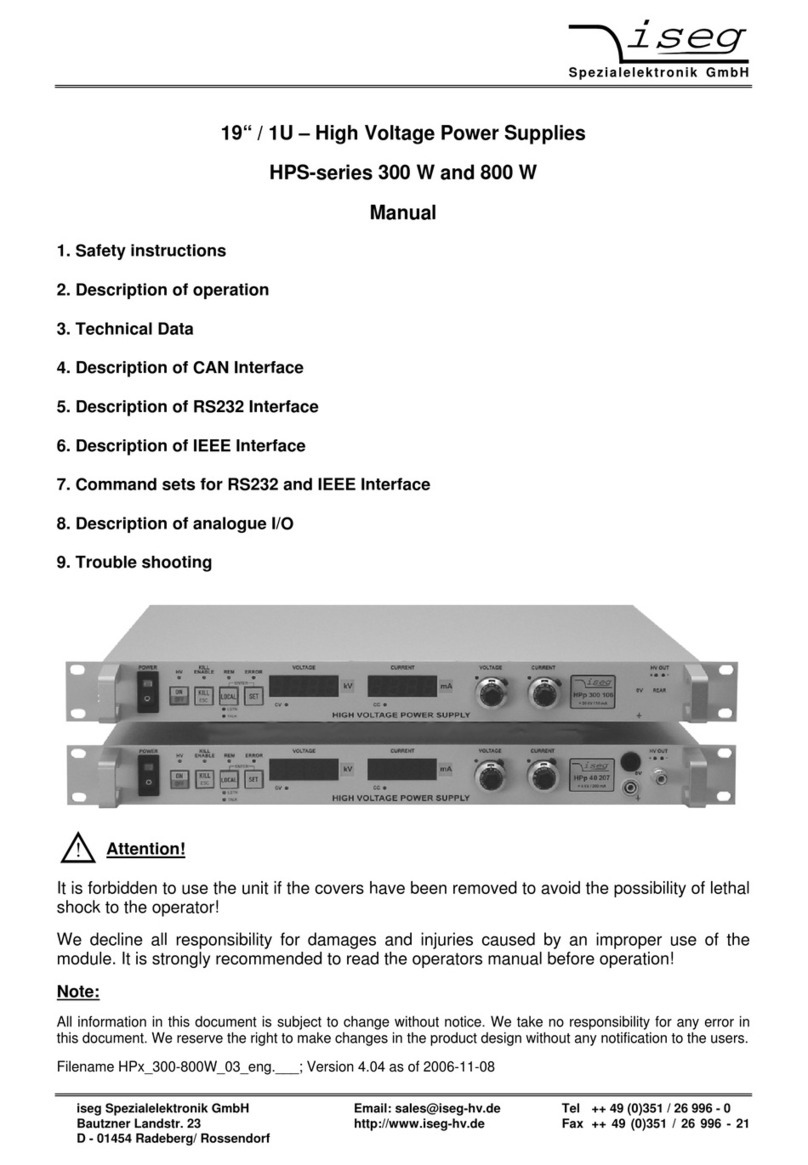
iseg
iseg HPS Series User manual
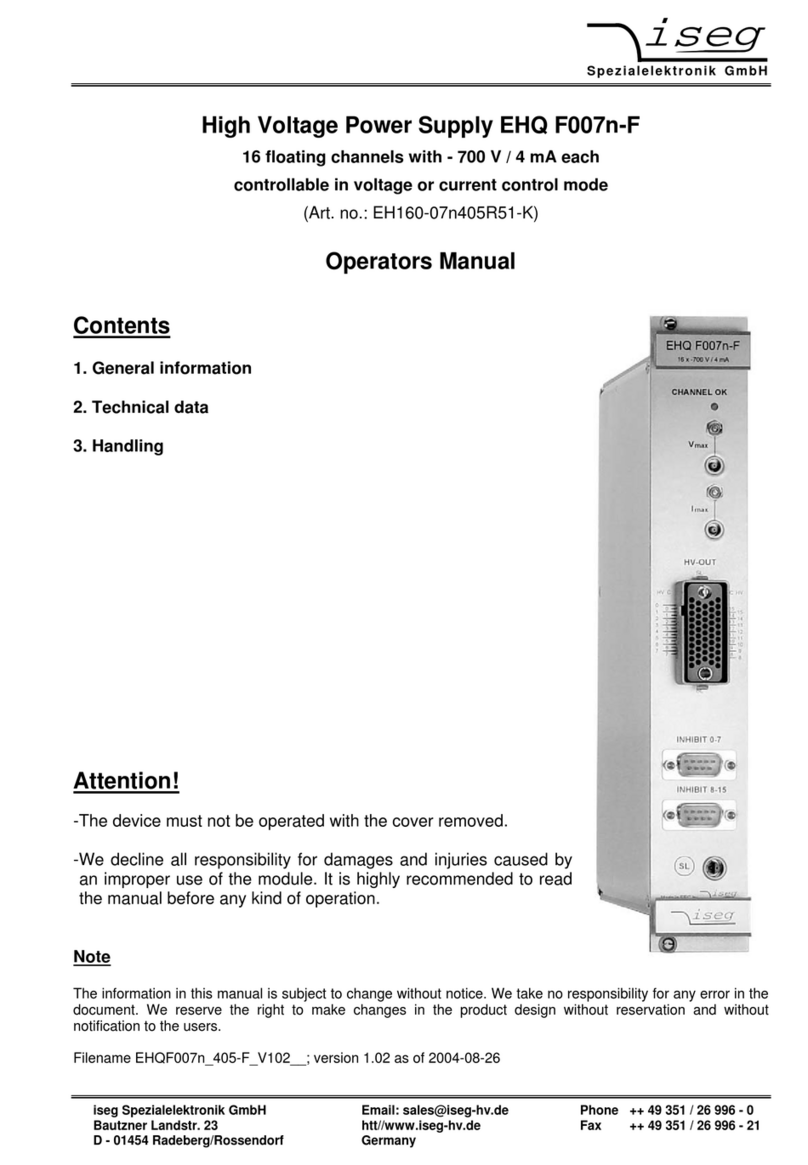
iseg
iseg EHQ F007n-F User manual
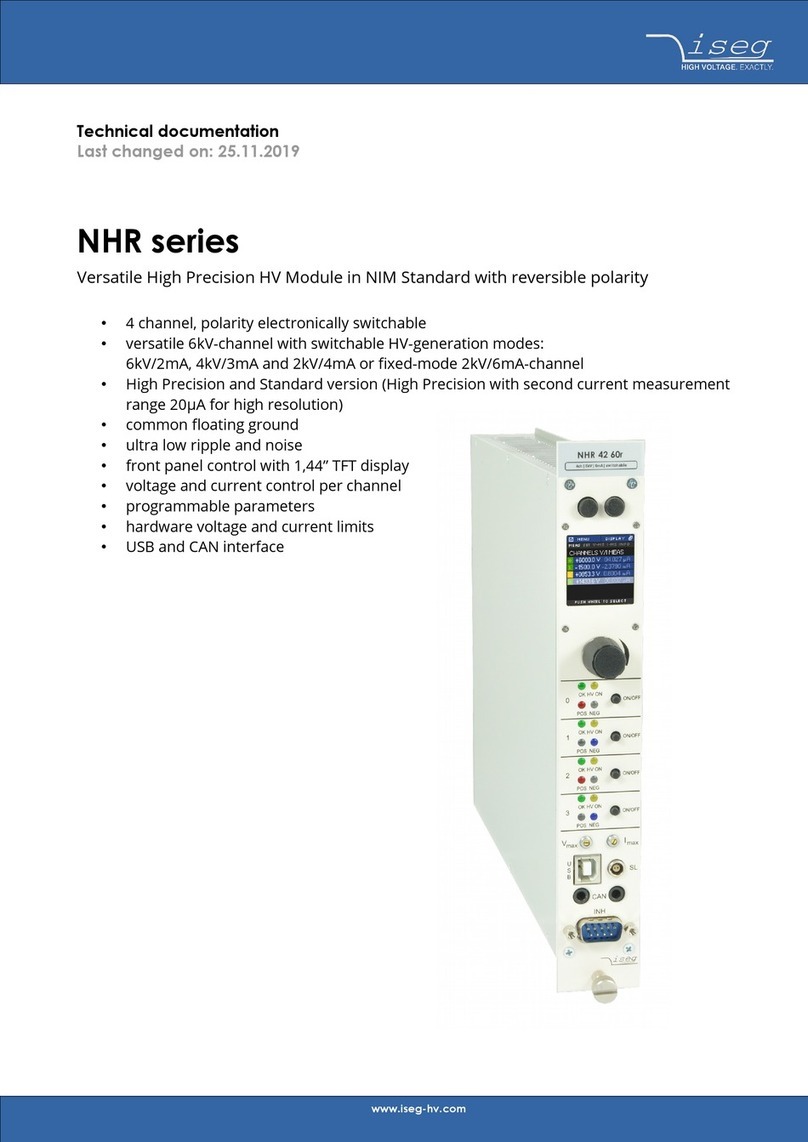
iseg
iseg NHR Series Guide

iseg
iseg EHQ 9005-F User manual
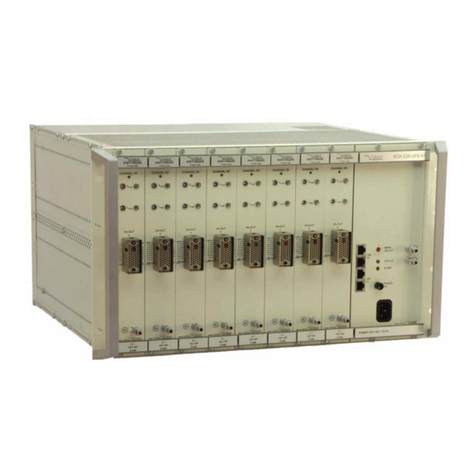
iseg
iseg ECH 238 1200W User manual

iseg
iseg THQ Series Guide
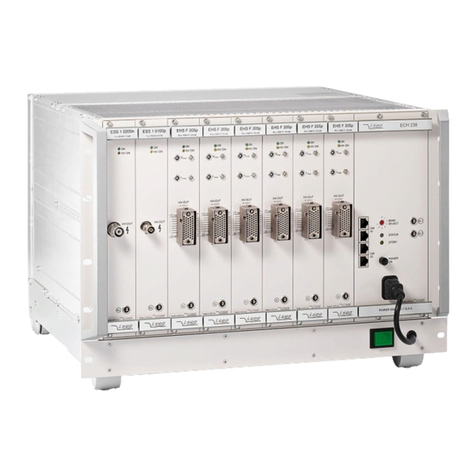
iseg
iseg ECH 238 User manual
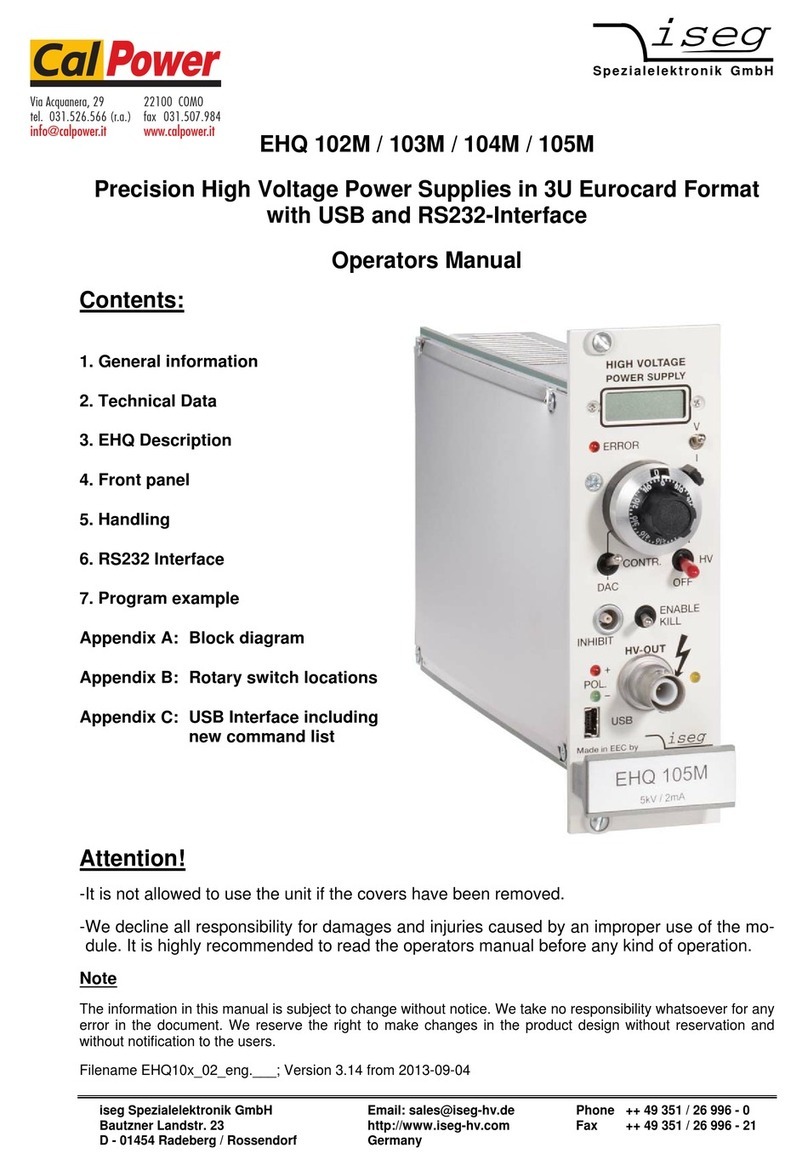
iseg
iseg CalPower EHQ 102M User manual
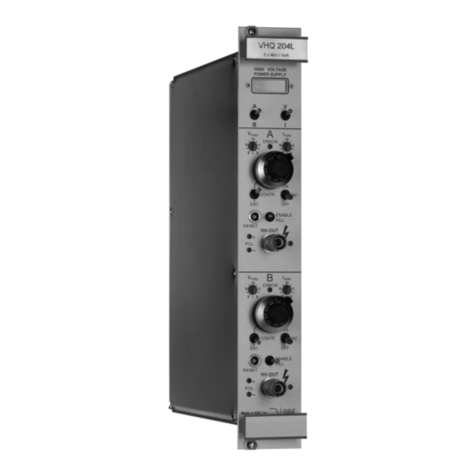
iseg
iseg VHQ 202M User manual
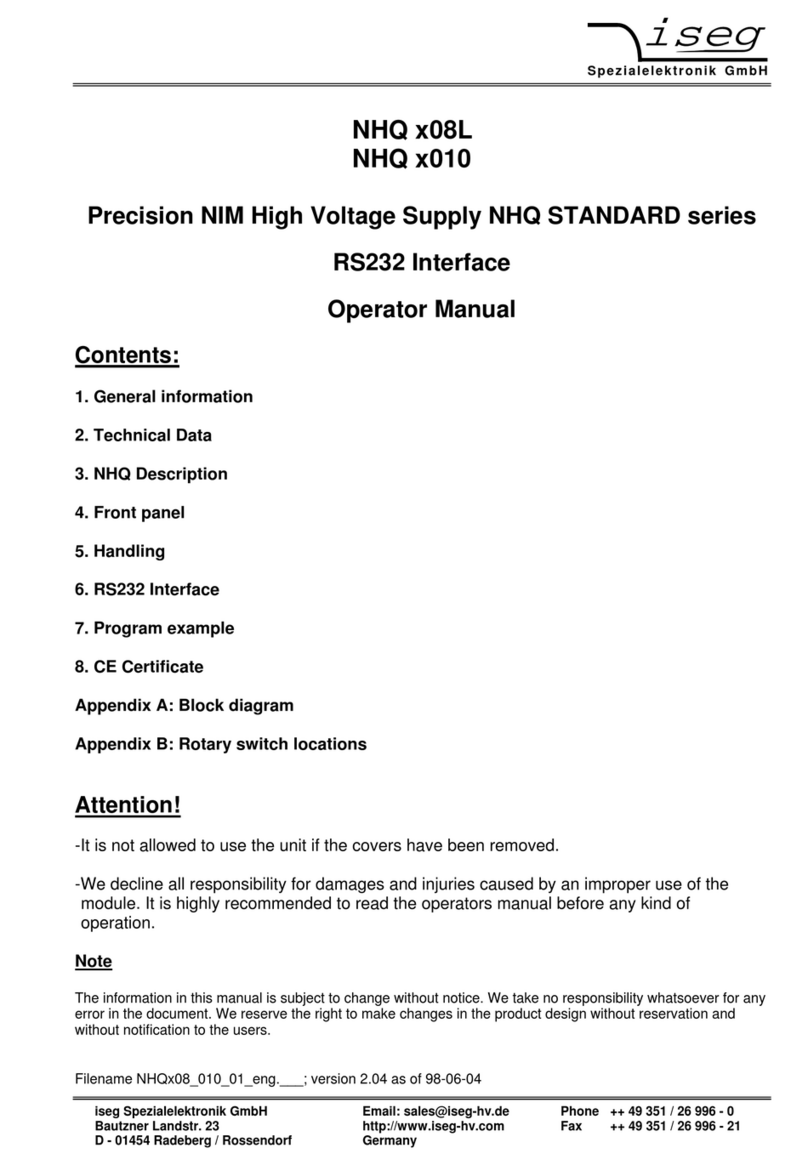
iseg
iseg NHQ STANDARD Series User manual
Popular Power Supply manuals by other brands
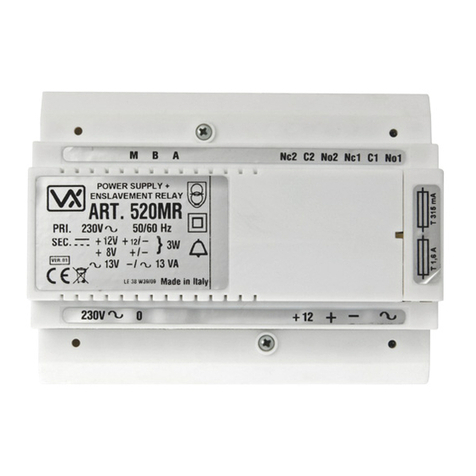
Videx
Videx 520MR Installation instruction

Poppstar
Poppstar 1008821 Instructions for use
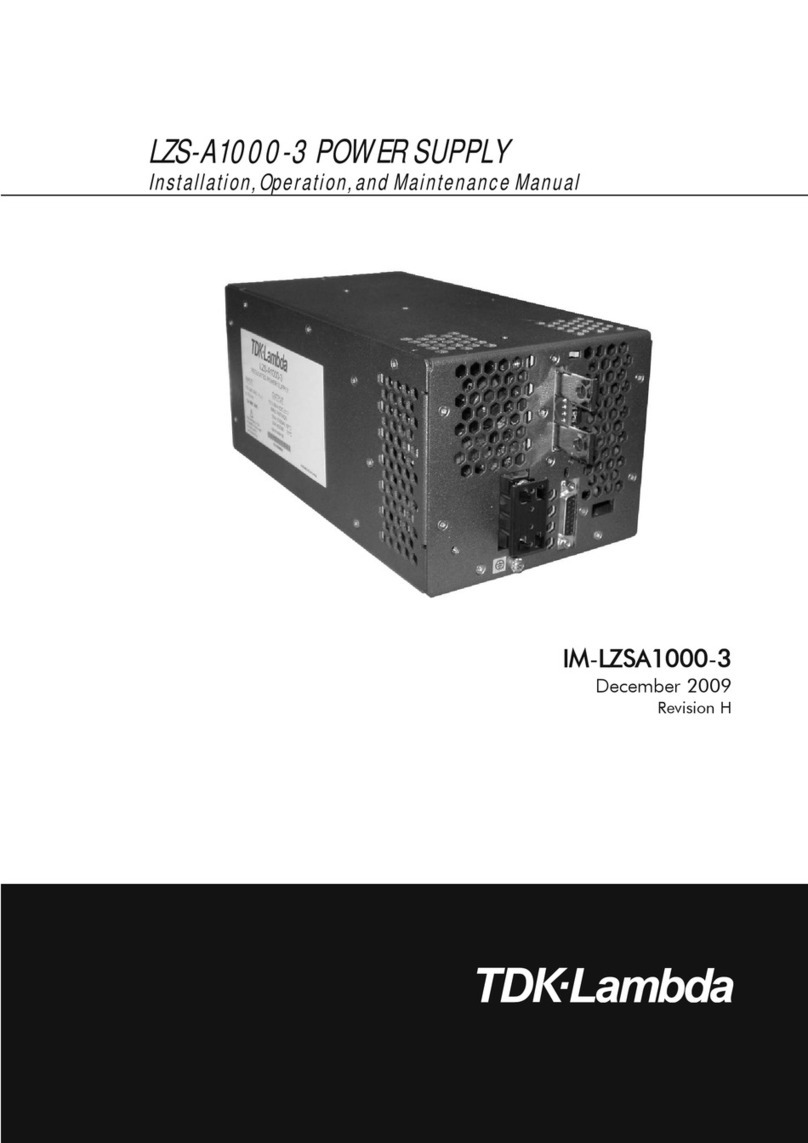
TDK-Lambda
TDK-Lambda LZS-A1000-3 Installation, operation and maintenance manual

TDK-Lambda
TDK-Lambda 500A instruction manual
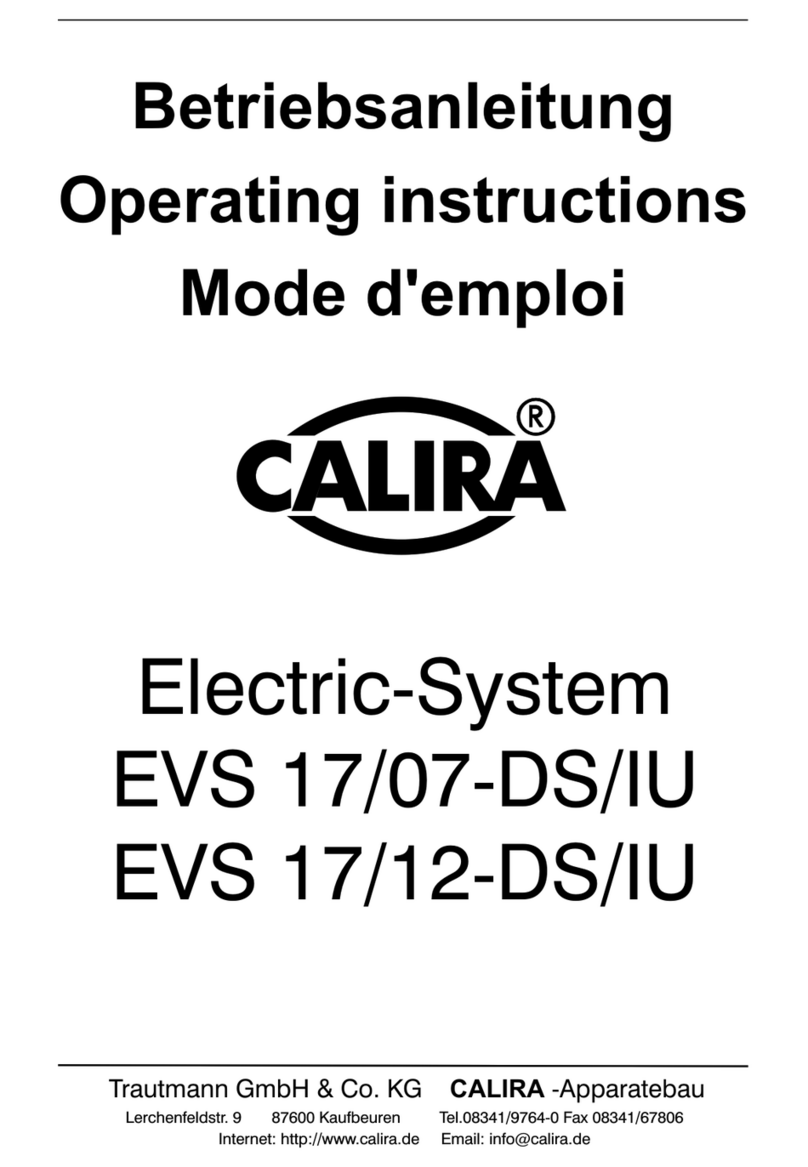
Calira
Calira EVS 17/07-DS/IU operating instructions
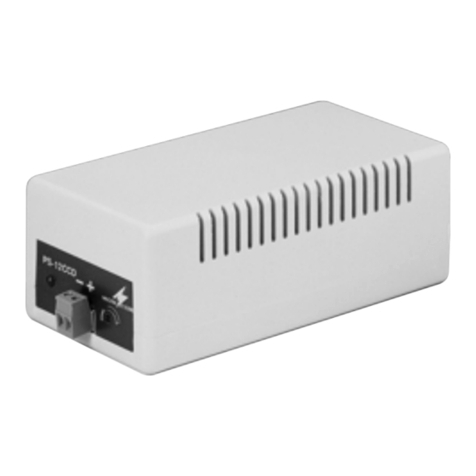
Monacor
Monacor PS-12CCD instruction manual
